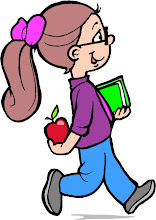We are in the midst of reading the book Runny Babbit by Shel Silverstein. This is a book of poems, but like "runny babbit" the beginnings of some words have been switched. It really taxes your phonics skills!
I tried to pull this book out a few months ago when K. started making up silly words, but I couldn't find it until I was re-doing our bookshelves. We are all enjoying the book immensely. We will read one or two poems each evening and read some of the favorite ones that we have read before. Here is one of K.'s favorites:
KUGS AND HISSES
Runny said, "I'm lonesome,
I feel so glad and soomy.
I need some kugs and hisses --
Now, who's gonna give 'em to me?"
"I will," said Polly Dorkupine,
"'Cause you're cute as a rug in a bug."
Said Runny, "Well, I'll kake the tiss,
But never hind the mug."









